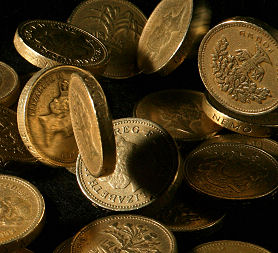As the "shockingly bad" GDP figures cast a gloomy shadow over the hopes of market recovery senior economics producer Neil Macdonald explains what it all means.

Today's figures for economic growth have brought forth a litany of gloom from City economists: "shockingly bad" says Capital Economics, "awful, awful numbers" according to Royal Bank of Scotland, "a bolt from the blue" says Investec.
At first glance, such negative comments might seem surprising. After all, the rate of decline in the economy has eased significantly.
In the first quarter, the economy shrank by 2.4 per cent. In the second quarter, it shrank by just 0.8 per cent. The problem is that economists had been expecting the decline to be 0.3 per cent. So the impression that has been building up of an economy on the mend has been given a nasty jolt.
The story that had been emerging - before today - was that the appalling collapse in output at the start of the year had been caused by de-stocking.
The theory went like this: as demand fell at the end of 2008, companies found themselves carrying more stock than they would normally hold. So to bring down stocks, they slashed output. In the case of Honda, they actually suspended all production for several months. So that produced a shocking picture for the first quarter of the year.
The hope was that as de-stocking came to an end, the economy would bounce back quite quickly. Well, clearly that has happened to some extent. But the overall impression from these numbers is that the underlying economy is much weaker than we all thought.
One immediate consequence of this is that Mr Darling's budget forecast - that the economy would shrink this year by 3.5 per cent - looks ever more vulnerable.
Some economists now think the number will be more like 4.5 per cent. And that is worrying for public finances because - as a general rule - the weaker the economy is, the lower the government's tax revenues are.
But another question is what the Bank of England should do.
Apart from holding interest rates at 0.5 per cent, the Bank has pumped £125bn into the economy as part of its programme of quantitative easing. There's been a growing sense that the Bank might now sit on its hands for a while and see how that big chunk of money worked its way through into increased economic activity.
Today's weaker GDP number may suggest that even more action will be required from the Bank.
Source
